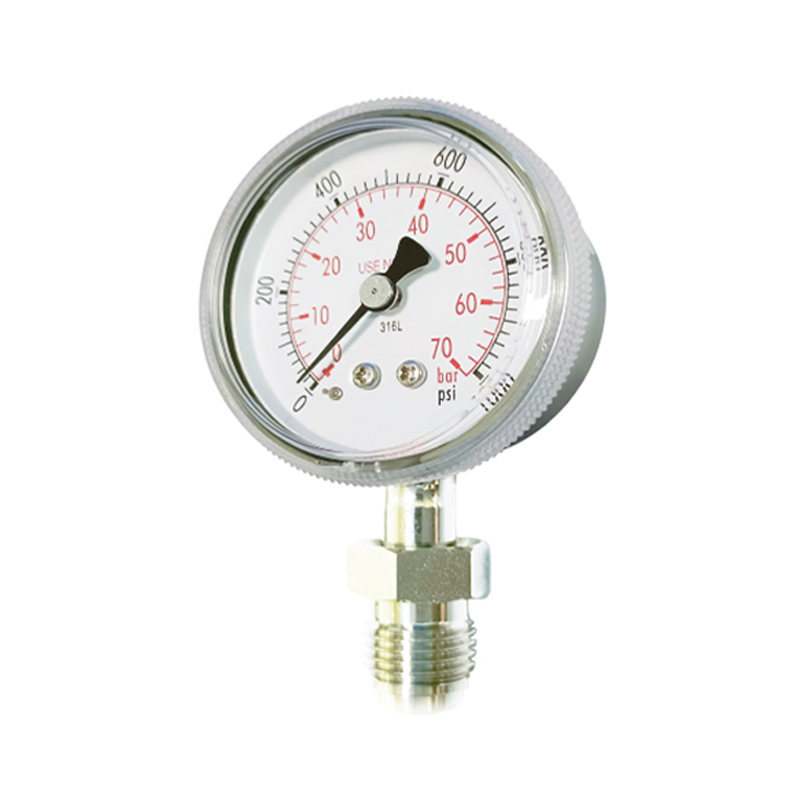
Dec . 11, 2024 00:31 Back to list
Precision Pressure Gauge for High-Quality Medical Oxygen Systems and Applications
Understanding High-Quality Medical Oxygen Pressure Gauges
In the realm of healthcare, precision and reliability are non-negotiable. One pivotal component that ensures the effective delivery of medical gases is the medical oxygen pressure gauge. Designed with the utmost attention to detail, high-quality medical oxygen pressure gauges play a critical role in the safety and efficacy of oxygen therapy, anesthesia, and other medical treatments. This article delves into the importance, functionality, and features of these essential instruments.
The Importance of Medical Oxygen Pressure Gauges
Medical oxygen is a lifeline for many patients, especially those with respiratory issues, chronic lung diseases, or in need of supplemental oxygen during surgeries. Consequently, maintaining an appropriate oxygen supply, both in terms of pressure and flow rate, is crucial. A medical oxygen pressure gauge serves as the window into the gas cylinder, allowing healthcare providers to monitor the available oxygen, ensuring that patients receive the correct dosage.
The gauge provides real-time data regarding the pressure of the oxygen in the cylinder. This information is vital not only for ensuring patient safety but also for preventing equipment failure. A malfunctioning pressure gauge can lead to either an inadequate supply of oxygen or a sudden surge, both of which can have serious consequences for patient care.
How Medical Oxygen Pressure Gauges Work
Medical oxygen pressure gauges operate on a straightforward principle. They utilize a Bourdon tube mechanism, which is a curved metallic tube that straightens as the pressure inside it increases. This movement is translated into a needle indicator on the gauge dial, providing a visual representation of the oxygen pressure. High-quality gauges are typically calibrated in psi (pounds per square inch) or bar units, allowing for easy interpretation by medical professionals.
The accuracy of the gauge is paramount. High-quality models undergo rigorous testing to ensure they can endure fluctuations in temperature, humidity, and other environmental conditions. Additionally, they should be designed to minimize the risk of damage from impact or shock, as such events can compromise their accuracy and reliability.
high quality medical oxygen pressure gauge

Features of High-Quality Medical Oxygen Pressure Gauges
1. Precision High-quality medical oxygen pressure gauges are engineered to provide precise readings. They are often designed with a larger dial and clear markings, making it easier for healthcare professionals to read the measurement at a glance.
2. Durability Medical environments can be hectic, and equipment is at risk of being dropped or knocked over. A good pressure gauge is made from robust materials that can withstand such impacts, extending its lifespan.
3. Easy Installation Many high-quality gauges are designed for easy installation onto a variety of oxygen tanks and delivery systems. Features like NPT (National Pipe Thread) fittings and universal mounting brackets can be crucial in medical settings where efficiency and speed are important.
4. Safety Features Advanced models may include safety devices such as relief valves and safety pop-off mechanisms that prevent over-pressurization, ensuring that neither the equipment nor the patient is at risk.
5. Compliance High-quality medical oxygen pressure gauges comply with relevant medical and safety standards. They are typically certified by bodies such as the FDA, ensuring that they meet strict safety and efficacy requirements.
Conclusion
Medical oxygen pressure gauges are indispensable tools in the healthcare industry, playing a vital role in ensuring that patients receive the appropriate oxygen therapy. With advancements in technology, high-quality pressure gauges now combine precision, durability, and safety features, making them reliable companions in any medical environment. As the demand for reliable medical care continues to grow, investing in high-quality equipment such as medical oxygen pressure gauges is not just beneficial but essential for ensuring patient safety and optimal care. Whether in hospitals, clinics, or homes, a dependable pressure gauge can make all the difference in delivering life-sustaining oxygen to those in need.
-
High-Precision 5 Valve Manifold Differential Pressure Gauge Suppliers
NewsApr.29,2025
-
High-Precision Diaphragm Vacuum Pressure Gauges Manufacturers & Quotes
NewsApr.29,2025
-
Omega Differential Pressure Gauges High Accuracy & Durability
NewsApr.28,2025
-
Low Pressure Differential Pressure Gauges Precision Solutions & Quotes
NewsApr.28,2025
-
Digital Diaphragm Pressure Gaauge Precision Measurement & OEM Quotes
NewsApr.28,2025
-
Differential Pressure Gauge China Price High-Accuracy & Best Quotes
NewsApr.28,2025
